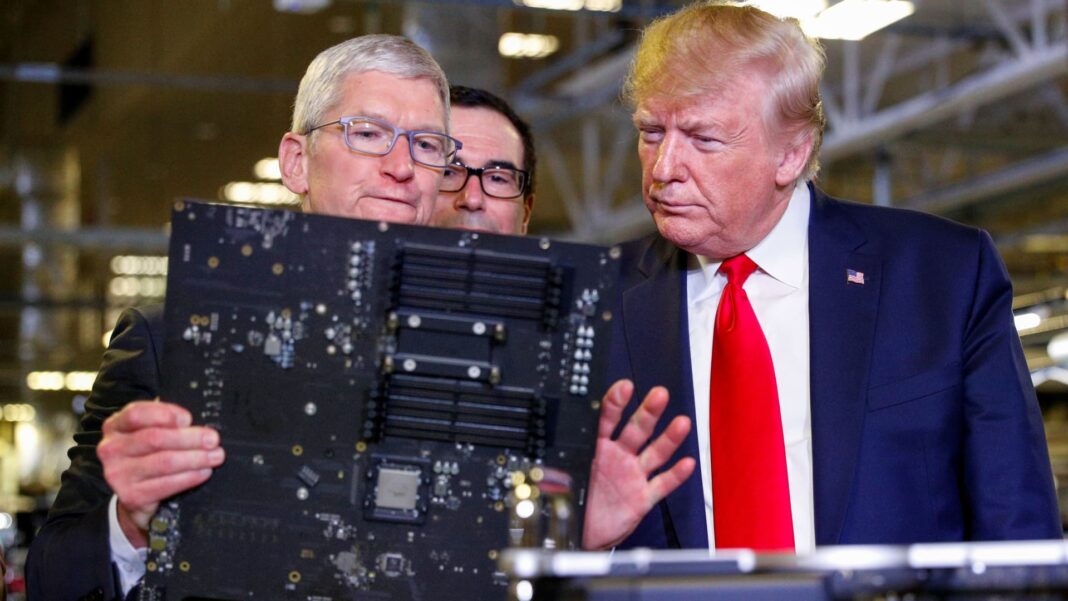## Made in the USA? Think Twice Before You Shell Out.
We’ve all seen the “Made in the USA” label and felt a swell of patriotic pride. It suggests quality, craftsmanship, and support for local jobs. But what if that pride came with a hefty price tag? CNBC recently crunched the numbers, and the results might surprise you.

A truly “Made in the USA” iPhone, constructed entirely with American-sourced materials and labor, would cost significantly more than its current price tag. This begs the question: are we willing to pay a premium for that American-made label? And what are the real costs – both financial and social – of our obsession with cheap electronics?

Building a Workforce: The US vs. China’s Manufacturing Landscape
The chasm between the U.S. and China’s manufacturing landscapes presents a significant hurdle for any “Made in the USA” iPhone initiative. While China boasts a vast, low-cost workforce accustomed to the intensive demands of electronics manufacturing, the U.S. faces a different reality. The American workforce, while highly skilled, is traditionally concentrated in higher-value sectors like software development and research.
The sheer scale of iPhone production further complicates the equation. Foxconn, Apple’s primary manufacturing partner, operates sprawling campuses in China with hundreds of thousands of employees. These facilities are designed to churn out hundreds of millions of iPhones annually, a feat that would require a massive overhaul of the U.S. manufacturing infrastructure and a significant influx of labor.
Foxconn’s Role: Can the Global Giant Adapt to American Production?
Foxconn, a Taiwanese company, has become synonymous with iPhone production. Its factories in China are a testament to the company’s ability to scale manufacturing at an unprecedented level. However, replicating this model in the U.S. presents a formidable challenge.
Adapting to U.S. labor laws, wage structures, and regulatory environments would necessitate significant investment and operational restructuring. Moreover, Foxconn’s existing supply chain, deeply embedded in China, would need to be re-engineered to accommodate American production. This could involve establishing new partnerships, sourcing materials from different suppliers, and navigating the complexities of transporting components across continents.
The Time Factor: Years of Investment and Construction Required
Building a state-of-the-art iPhone manufacturing facility in the U.S. is a monumental undertaking that would span several years. From site selection and construction to equipment installation and workforce training, the process would require a substantial upfront investment, potentially reaching billions of dollars.
Even after construction is complete, ramping up production to meet global demand would take time. Establishing efficient workflows, ensuring quality control, and training a new workforce would be essential steps in achieving full operational capacity.
The Uncertainty of Trade Policy: Will Future Regulations Derail the Effort?
The political landscape surrounding trade policy is constantly evolving, adding another layer of uncertainty to the feasibility of a “Made in the USA” iPhone. Future tariffs, regulations, or trade agreements could significantly impact the cost of production, potentially rendering the venture economically unviable.
The unpredictability of U.S. trade policy creates risk for any company considering large-scale investments in American manufacturing. Apple, known for its meticulous planning and risk management, would undoubtedly factor this uncertainty into its decision-making process.
The Consumer Impact: Will Americans Pay More for a “Made in the USA” iPhone?
One of the most immediate consequences of a “Made in the USA” iPhone would be a price increase. Analysts estimate that labor costs alone could add up to 25% to the price tag. This translates to a potential jump from the current iPhone 16 Pro price of $1,199 to around $1,500.
Other factors, such as increased transportation costs, tariffs on imported components, and research and development expenses, could further inflate the price.
Consumer Sentiment: A Divided Market Between Patriotism and Price
Consumer response to a more expensive “Made in the USA” iPhone would likely be mixed. Some consumers might be willing to pay a premium for the perceived value of supporting domestic manufacturing and jobs. Others might prioritize affordability and accessibility, opting for iPhones manufactured in countries with lower labor costs.
Apple would need to carefully navigate this consumer sentiment, balancing the desire to appeal to patriotic consumers with the need to maintain its broad market share and affordability.
The Impact on Apple’s Bottom Line: Navigating the Costs and Benefits
The financial implications of a “Made in the USA” iPhone for Apple are complex and multifaceted. While domestic production could generate positive publicity and strengthen brand image, the higher costs associated with labor, logistics, and regulatory compliance could erode profit margins.
Apple would need to carefully weigh these costs and benefits, considering the potential impact on its overall profitability and market share.
The Global Tech Landscape: How a US-Made iPhone Could Reshape the Industry
The success or failure of a “Made in the USA” iPhone could have a ripple effect across the global tech industry. Other manufacturers may follow suit, seeking to capitalize on the trend of bringing production back to the U.S. This could lead to a shift in manufacturing hubs, potentially benefiting American workers and strengthening the domestic economy.
However, it could also lead to higher prices for consumers worldwide and potentially exacerbate global trade tensions.
Conclusion
So, how much would that “Made in the USA” iPhone really cost? The CNBC analysis paints a stark picture: significantly more than the current price tag. While the allure of supporting domestic manufacturing is undeniable, the financial reality is complex. The article highlights the intricate web of global supply chains and the undeniable cost advantages of overseas production. Bringing iPhone manufacturing back to the US would necessitate not only higher labor costs but also significant investments in infrastructure and a re-skilled workforce.
The implications of this analysis extend far beyond the price of a smartphone. It forces us to confront the realities of globalization, the trade-offs between cost and ethics, and the delicate balance between national economic interests and global competitiveness. The question isn’t just about the affordability of a “Made in the USA” iPhone, but about the broader societal costs and benefits of reshoring manufacturing. Will consumers be willing to pay a premium for a product that reflects a renewed commitment to domestic production, or will the siren song of lower prices continue to drive globalized supply chains?
This isn’t just a technological debate; it’s a conversation about the values we prioritize as a society. The choice ultimately lies with us – consumers, policymakers, and businesses alike. Will we embrace a future where technology is both accessible and ethically produced, or will we continue down the path of cheap, distant manufacturing? The answer will shape the landscape of our economy and the very fabric of our society.
